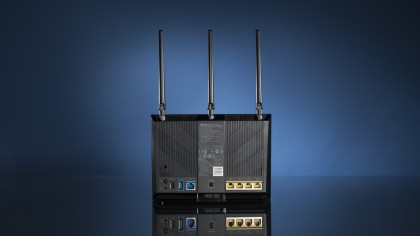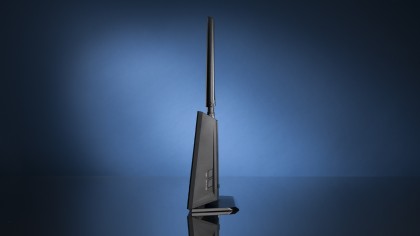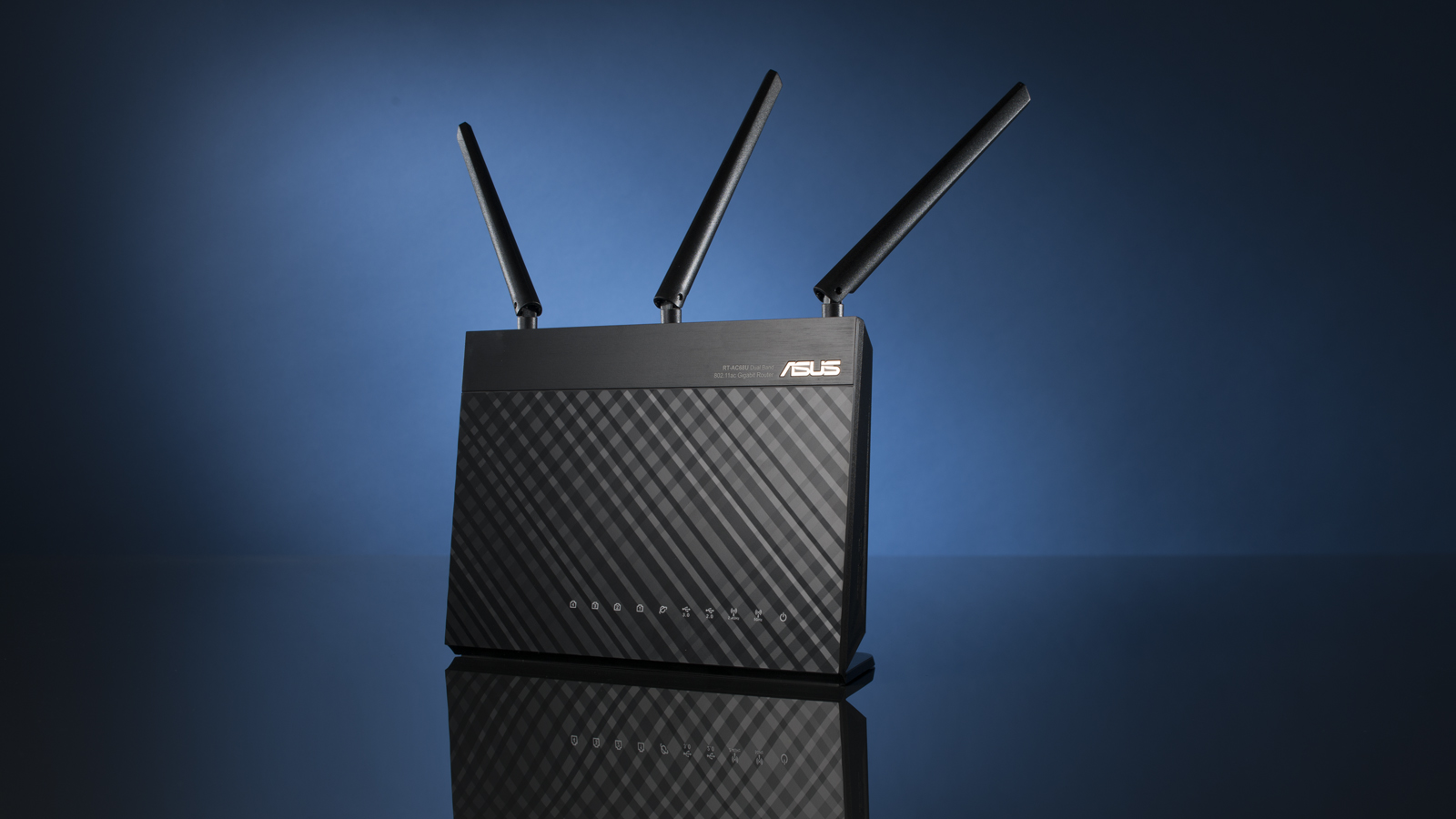TechRadar Verdict
The RT-AC68U router more than justifies its high-end price tag with premium performance, range, and versatility.
Pros
- +
Super fast transfers
- +
Long range
- +
Simple setup
- +
6 discrete WANs
Cons
- -
Pricey
- -
Feature overkill for most
Why you can trust TechRadar
Much like its RT-AC66U precursor, Asus's RT-AC68U Dual Band Wireless AC1900 Gigabit Router resides at the high end of the consumer router category. That said, the high price equates to remarkable performance, compliments of some upgraded internal components.
This router incorporates Broadcom's new BCM4709 Wi-Fi chipset, the cornerstone of which is a 1GHz, dual-core ARM Cortex A9 processor with 802.11ac support, theoretically up to 1.3Gbps. The chipset also offers accelerated 802.11n data rates of up to 600Mbps, thanks to Broadcom's proprietary TurboQAM technology.
TurboQAM ups the speed of each of the router's three data streams to 200Mbps. It is important to note that this isn't good news for everyone. While most homes today do have a large number of devices that operate on the 2.4GHz frequency, these devices need to have TurboQAM-compatible clients to achieve maximum performance. As it stands, you'll still see a decent performance boost on this frequency, but we'll get to the benchmarks shortly.
Design
Aesthetically, Asus has taken a new direction with the RT-AC68U from the previous model. Whereas the rather conventional-looking RT-AC66U laid flat, this new model stands upright. The angular backside of the device means there is no practical way to lay it down in a manner that feels stable.

While this router lacks the avant-garde (for a router at least), stealth bomber profile of the Netgear R7000 Nighthawk, it does sport a slim profile and a straightforward, carbon fiber-looking chassis. And to be fair, in tandem with the upright design, the three detachable antennae do give it a fairly aggressive look.
The backside of the router has the standard array of four LAN ports and one source port for your Internet gateway. It also has a USB port for plugging in an external drive or printer. One excellent touch: if you are as annoyed by flashing lights as I am, you will love the ability to turn off the LED indicators on the router's front side. More consumer electronics should offer this option.
Setup and features
Setting up the RT-AC68U was a snap. My office PC (which was plugged in via Ethernet) detected the new router as soon as I plugged it into my network, and launched a setup wizard in my browser. This wizard allowed me to quickly establish network names, set passwords for each network, and set the password for the device itself.
Sign up to the TechRadar Pro newsletter to get all the top news, opinion, features and guidance your business needs to succeed!
More advanced options can also be found from this same interface, and the RT-AC68U offers a wide range of interesting features and tools. At the intermediate level, you can perform tasks like calling up a network map of all connected devices, and using said map to configure and revoke device access. Even better, you can set up one Wi-Fi network on each band (2.4GHz and 5GHz) as well as three discrete public networks on each band.

At the more advanced level, you can set up Asus' AiDisk to share a connected drive's music, movies, and more via a DLNA-compatible stream, or even via FTP. If you're feeling particularly brave, you can extend this access all the way downstream to your main PC.
Power users and small businesses will greatly appreciate the dual-WAN support, which allows you to plug another Internet provider into your network. This is IT-caliber tech that is perfect for home office users who need to simultaneously support a general Internet connection as well as a fixed-IP connection, or businesses that value redundant connectivity. Plus, if you have an RT-AC66U router, most of these tools and services are available to you also via a recent firmware update.
